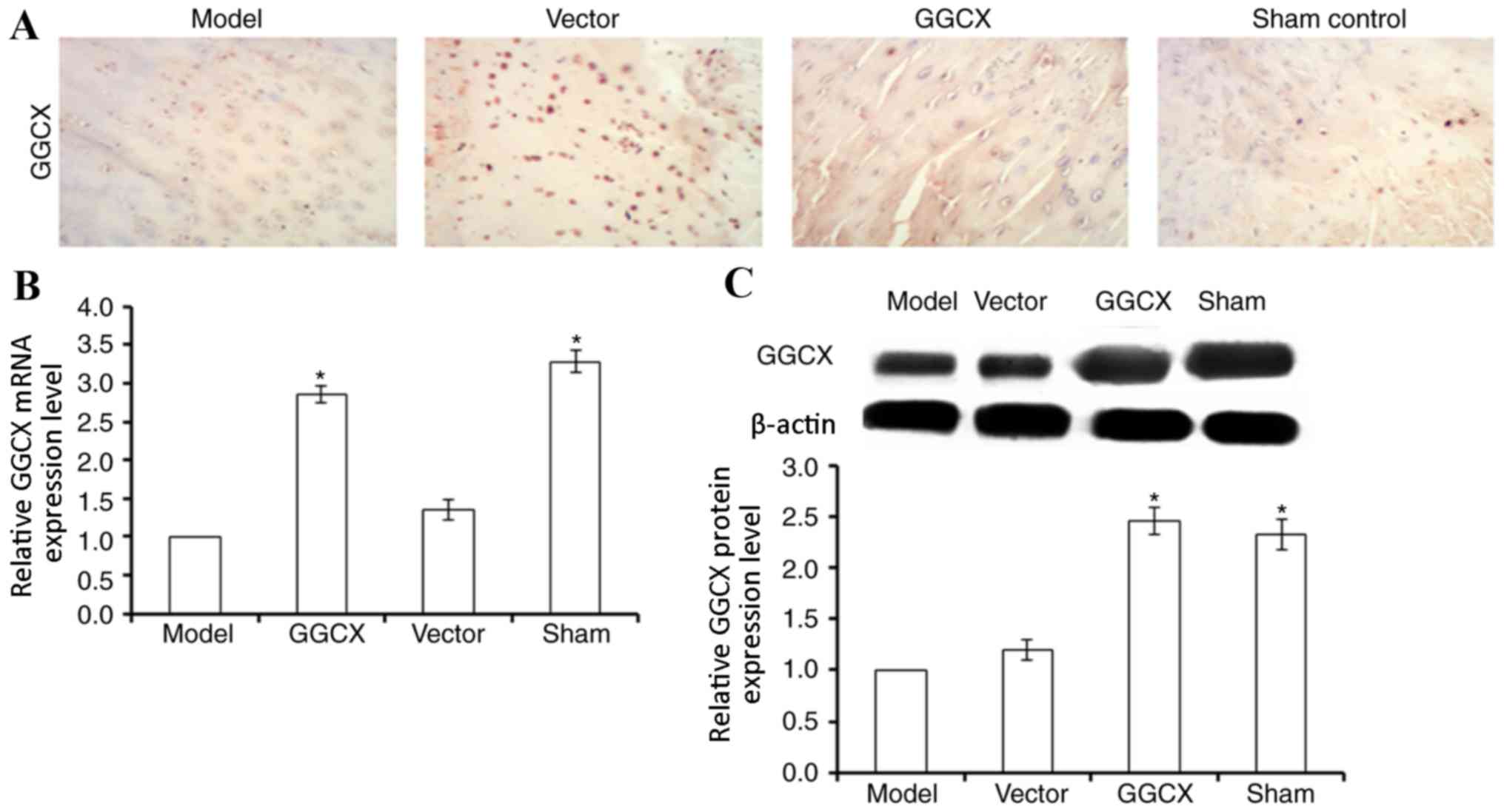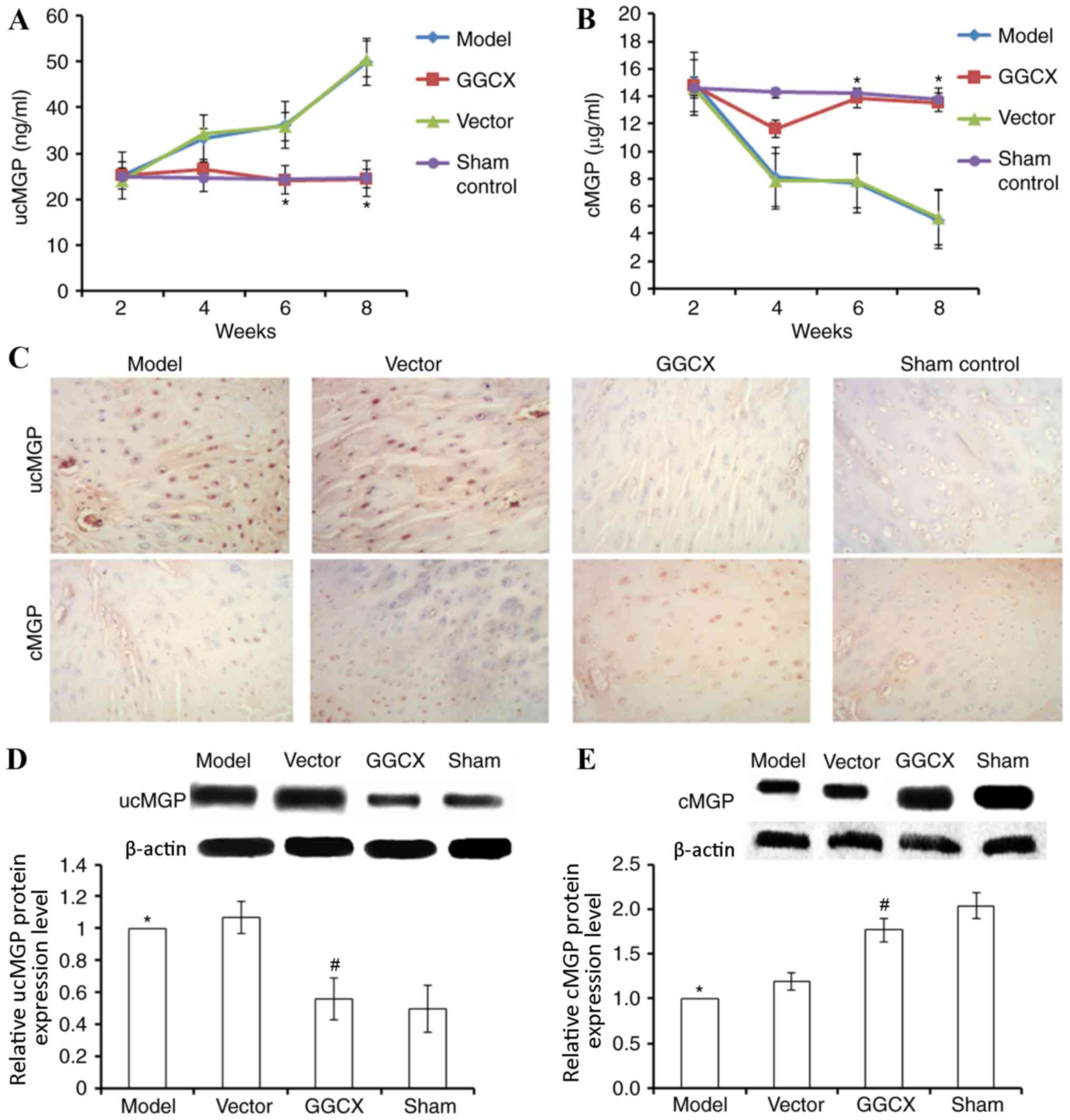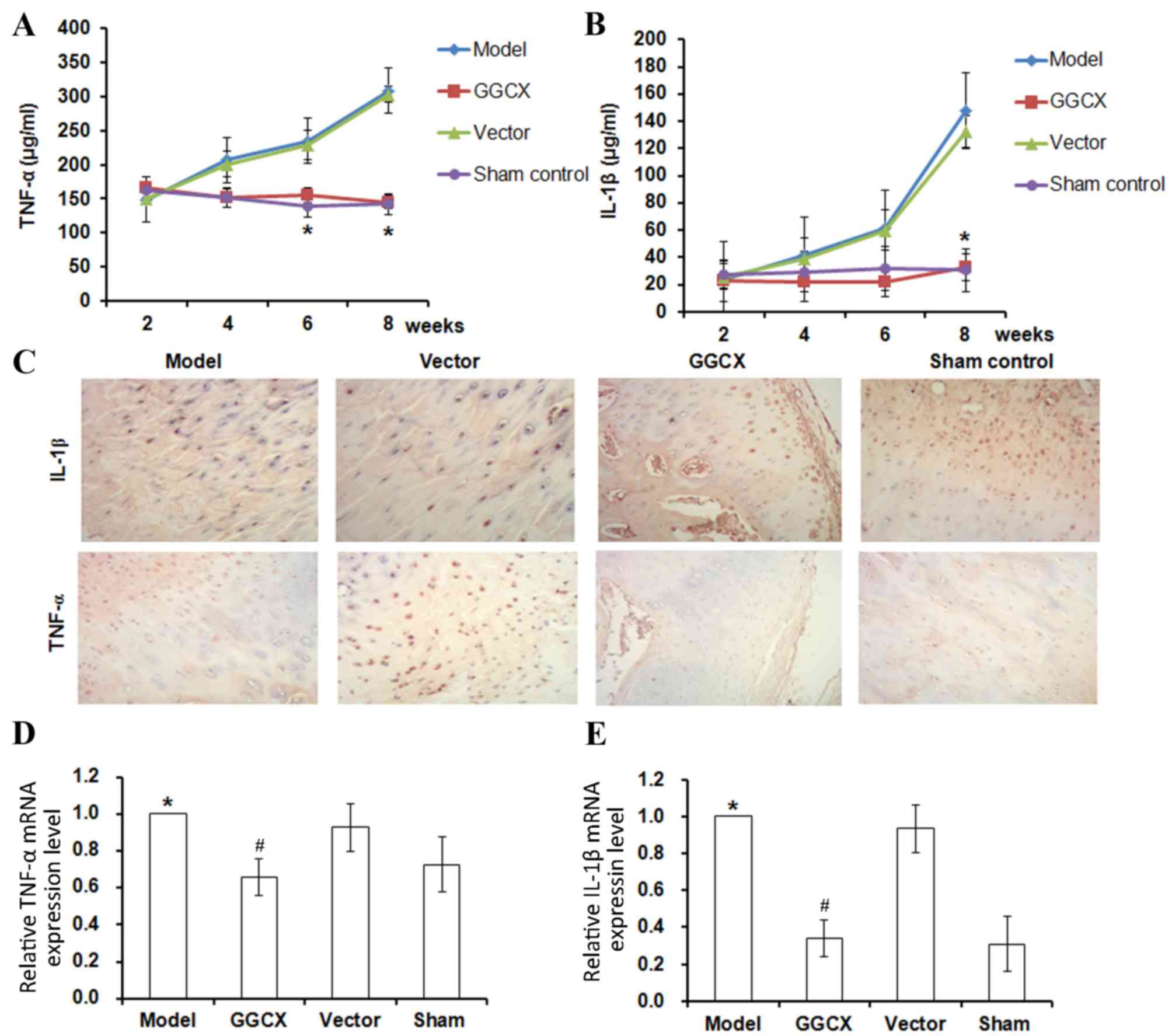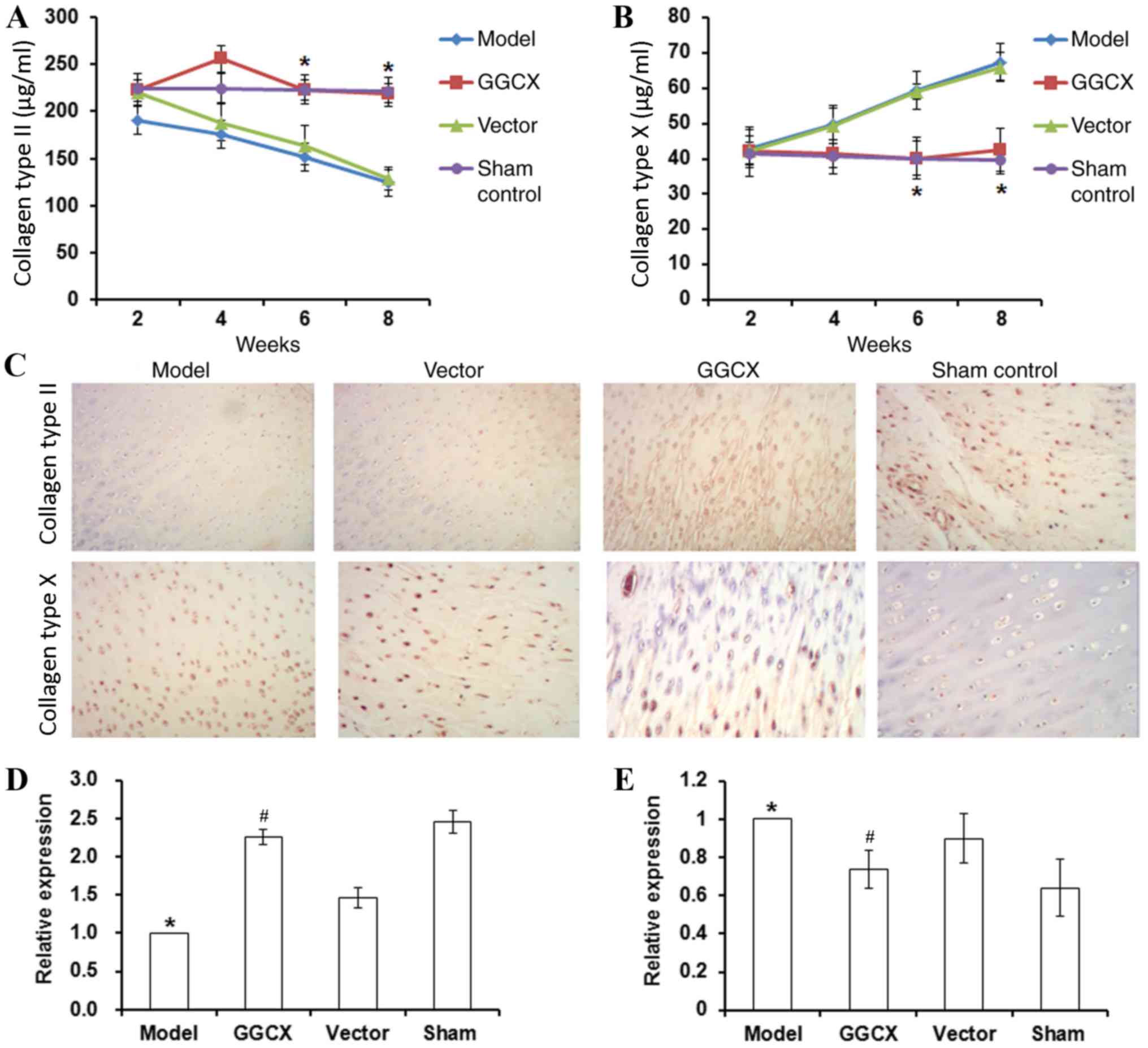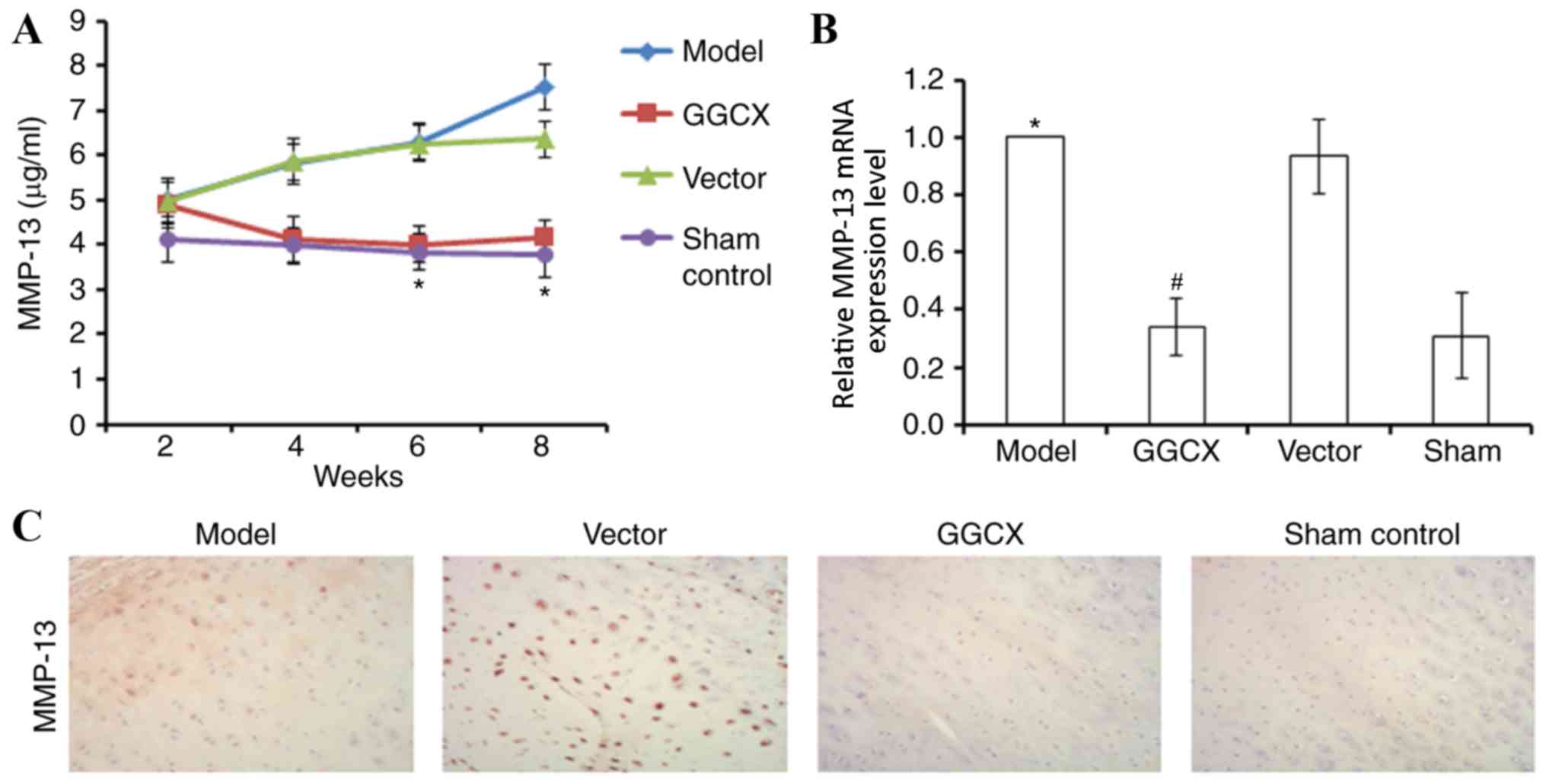|
1
|
Loeser RF, Goldring SR, Scanzello CR and
Goldring MB: Osteoarthritis: A disease of the joint as an organ.
Arthritis Rheum. 64:1697–1707. 2012. View Article : Google Scholar : PubMed/NCBI
|
|
2
|
Crema MD, Roemer FW, Felson DT, Englund M,
Wang K, Jarraya M, Nevitt MC, Marra MD, Torner JC, Lewis CE and
Guermazi A: Factors associated with meniscal extrusion in knees
with or at risk for osteoarthritis: The multicenter osteoarthritis
study. Radiology. 264:494–503. 2012. View Article : Google Scholar : PubMed/NCBI
|
|
3
|
Michael JW, Schlüter-Brust KU and Eysel P:
The epidemiology, etiology, diagnosis, and treatment of
osteoarthritis of the knee. Dtsch Arztebl Int. 107:152–162.
2010.PubMed/NCBI
|
|
4
|
Zhang Y and Jordan JM: Epidemiology of
osteoarthritis. Clin Geriatr Med. 26:355–369. 2010. View Article : Google Scholar : PubMed/NCBI
|
|
5
|
Geusens PP and van den Bergh JP:
Osteoporosis and osteoarthritis: Shared mechanisms and
epidemiology. Curr Opin Rheumatol. 28:97–103. 2016. View Article : Google Scholar : PubMed/NCBI
|
|
6
|
Shea MK, O'Donnell CJ, Vermeer C,
Magdeleyns EJ, Crosier MD, Gundberg CM, Ordovas JM, Kritchevsky SB
and Booth SL: Circulating uncarboxylated matrix gla protein is
associated with vitamin K nutritional status, but not coronary
artery calcium, in older adults. J Nutr. 141:1529–1534. 2011.
View Article : Google Scholar : PubMed/NCBI
|
|
7
|
Silaghi CN, Fodor D, Cristea V and Craciun
AM: Synovial and serum levels of uncarboxylated matrix Gla-protein
(ucMGP) in patients with arthritis. Clin Chem Lab Med. 50:125–128.
2012. View Article : Google Scholar
|
|
8
|
Xi XF, Li XZ, Liu F, Fu NN, Ren Y, Yang XG
and Zhang Y: Effects of short thrust needing plus
Electroacupuncture intervention on cartilage tissue in rabbits with
knee osteoarthritis. Zhen Ci Yan Jiu. 41:124–130. 2016.(In
Chinese). PubMed/NCBI
|
|
9
|
Shi Y, Chen W and Yan S: Study on effect
of GGCX in knee osteoarthritis pathogenesis. Int J Clin Exp Med.
9:13657–13663. 2016.
|
|
10
|
Sokolove J and Lepus CM: Role of
inflammation in the pathogenesis of osteoarthritis: Latest findings
and interpretations. Ther Adv Musculoskelet Dis. 5:77–94. 2013.
View Article : Google Scholar : PubMed/NCBI
|
|
11
|
Bello AE and Oesser S: Collagen
hydrolysate for the treatment of osteoarthritis and other joint
disorders: A review of the literature. Curr Med Res Opin.
22:2221–2232. 2006. View Article : Google Scholar : PubMed/NCBI
|
|
12
|
Boulocher C, Duclos ME, Arnault F,
Roualdes O, Fau D, Hartmann DJ, Roger T, Vignon E and Viguier E:
Knee joint ultrasonography of the ACLT rabbit experimental model of
osteoarthritis: Relevance and effectiveness in detecting meniscal
lesions. Osteoarthritis Cartilage. 16:470–479. 2008. View Article : Google Scholar : PubMed/NCBI
|
|
13
|
Livak KJ and Schmittgen TD: Analysis of
relative gene expression data using real-time quantitative PCR and
the 2(-Delta Delta C(T)) method. Methods. 25:402–408. 2001.
View Article : Google Scholar : PubMed/NCBI
|
|
14
|
Kurz B, Domm C, Jin M, Sellckau R and
Schünke M: Tissue engineering of articular cartilage under the
influence of collagen I/III membranes and low oxygen tension.
Tissue Eng. 10:1277–1286. 2004. View Article : Google Scholar : PubMed/NCBI
|
|
15
|
Arden N and Nevitt MC: Osteoarthritis:
Epidemiology. Best Pract Res Clin Rheumatol. 20:3–25. 2006.
View Article : Google Scholar : PubMed/NCBI
|
|
16
|
Phillips S, Silvia Li C, Phillips M,
Bischoff M, Ali P, Chahal J, Snider M and Bhandari M: Treatment of
osteoarthritis of the Knee with bracing: A scoping review. Orthop
Rev (Pavia). 8:62562016. View Article : Google Scholar : PubMed/NCBI
|
|
17
|
Anandacoomarasamy A and March L: Current
evidence for osteoarthritis treatments. Ther Adv Musculoskelet Dis.
2:17–28. 2010. View Article : Google Scholar : PubMed/NCBI
|
|
18
|
Viegas CS, Cavaco S, Neves PL, Ferreira A,
João A, Williamson MK, Price PA, Cancela ML and Simes DC: Gla-rich
protein is a novel vitamin K-dependent protein present in serum
that accumulates at sites of pathological calcifications. Am J
Pathol. 175:2288–2298. 2009. View Article : Google Scholar : PubMed/NCBI
|
|
19
|
Lorenzen JM, Martino F, Scheffner I,
Bröcker V, Leitolf H, Haller H and Gwinner W: Fetuin, matrix-Gla
protein and osteopontin in calcification of renal allografts. PLoS
One. 7:e520392012. View Article : Google Scholar : PubMed/NCBI
|
|
20
|
Berenbaum F, Griffin TM and Liu-Bryan R:
Metabolic regulation of inflammation in osteoarthritis. Arthritis
Rheumatol. 69:9–21. 2017. View Article : Google Scholar : PubMed/NCBI
|
|
21
|
Martin MU and Wesche H: Summary and
comparison of the signaling mechanisms of the Toll/interleukin-1
receptor family. Biochim Biophys Acta. 1592:265–280. 2002.
View Article : Google Scholar : PubMed/NCBI
|
|
22
|
Chambers MG, Kuffner T, Cowan SK, Cheah KS
and Mason RM: Expression of collagen and aggrecan genes in normal
and osteoarthritic murine knee joints. Osteoarthritis Cartilage.
10:51–61. 2002. View Article : Google Scholar : PubMed/NCBI
|
|
23
|
Eerola I, Salminen H, Lammi P, Lammi M,
von der Mark K, Vuorio E and Säämänen AM: Type X collagen, a
natural component of mouse articular cartilage: Association with
growth, aging, and osteoarthritis. Arthritis Rheum. 41:1287–1295.
1998. View Article : Google Scholar : PubMed/NCBI
|
|
24
|
Lu P, Takai K, Weaver VM and Werb Z:
Extracellular matrix degradation and remodeling in development and
disease. Cold Spring Harb Perspect Biol. 3:pii: a0050582011.
View Article : Google Scholar
|
|
25
|
Loeser RF, Varnum BC, Carlson CS, Goldring
MB, Liu ET, Sadiev S, Kute TE and Wallin R: Human chondrocyte
expression of growth-arrest-specific gene 6 and the tyrosine kinase
receptor axl: Potential role in autocrine signaling in cartilage.
Arthritis Rheum. 40:1455–1465. 1997. View Article : Google Scholar : PubMed/NCBI
|
|
26
|
Melaragno MG, Cavet ME, Yan C, Tai LK, Jin
ZG, Haendeler J and Berk BC: Gas6 inhibits apoptosis in vascular
smooth muscle: Role of Axl kinase and Akt. J Mol Cell Cardiol.
37:881–887. 2004. View Article : Google Scholar : PubMed/NCBI
|
|
27
|
Stenhoff J, Dahlbäck B and Hafizi S:
Vitamin K-dependent Gas6 activates ERK kinase and stimulates growth
of cardiac fibroblasts. Biochem Biophys Res Commun. 319:871–878.
2004. View Article : Google Scholar : PubMed/NCBI
|



